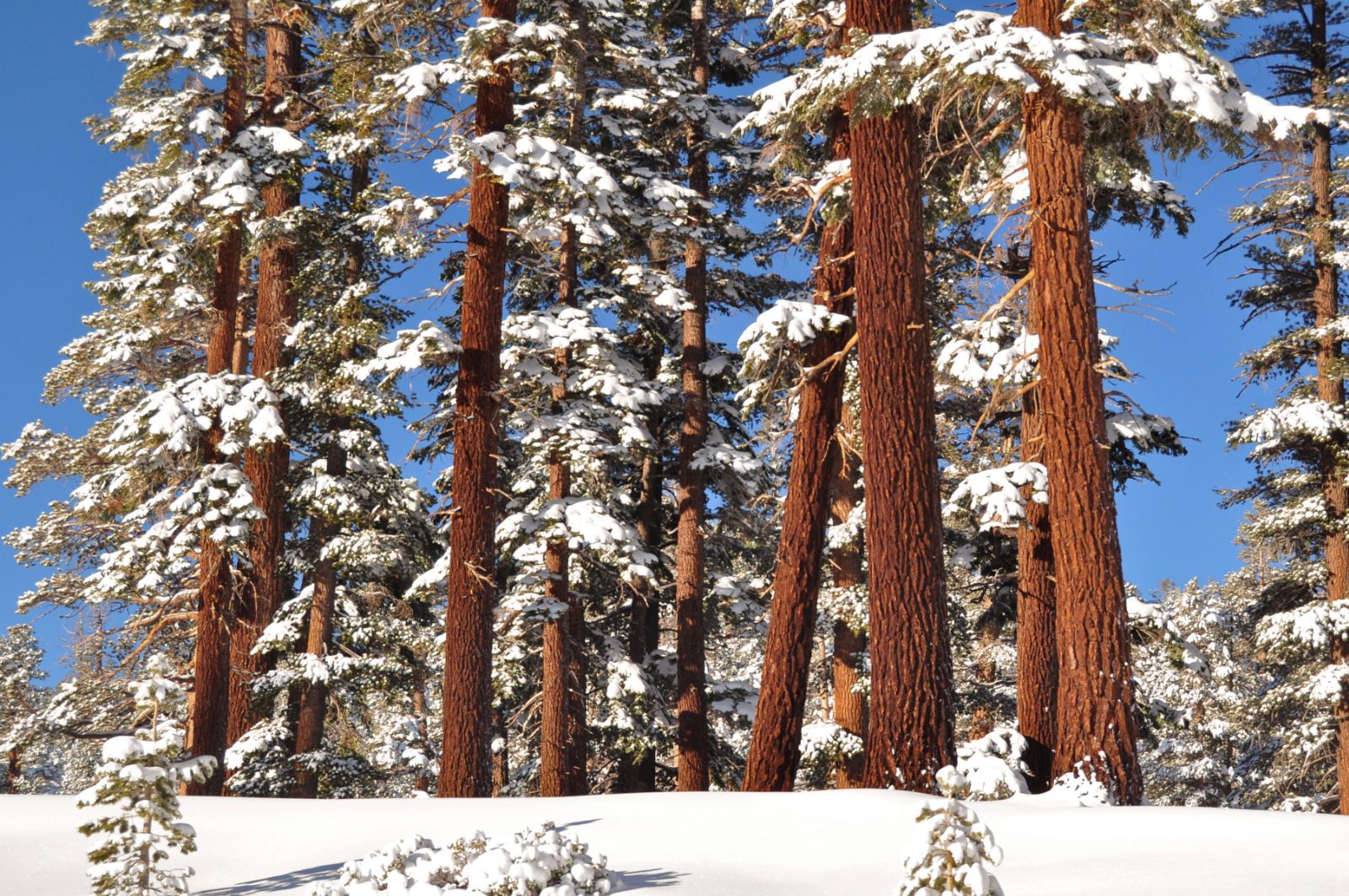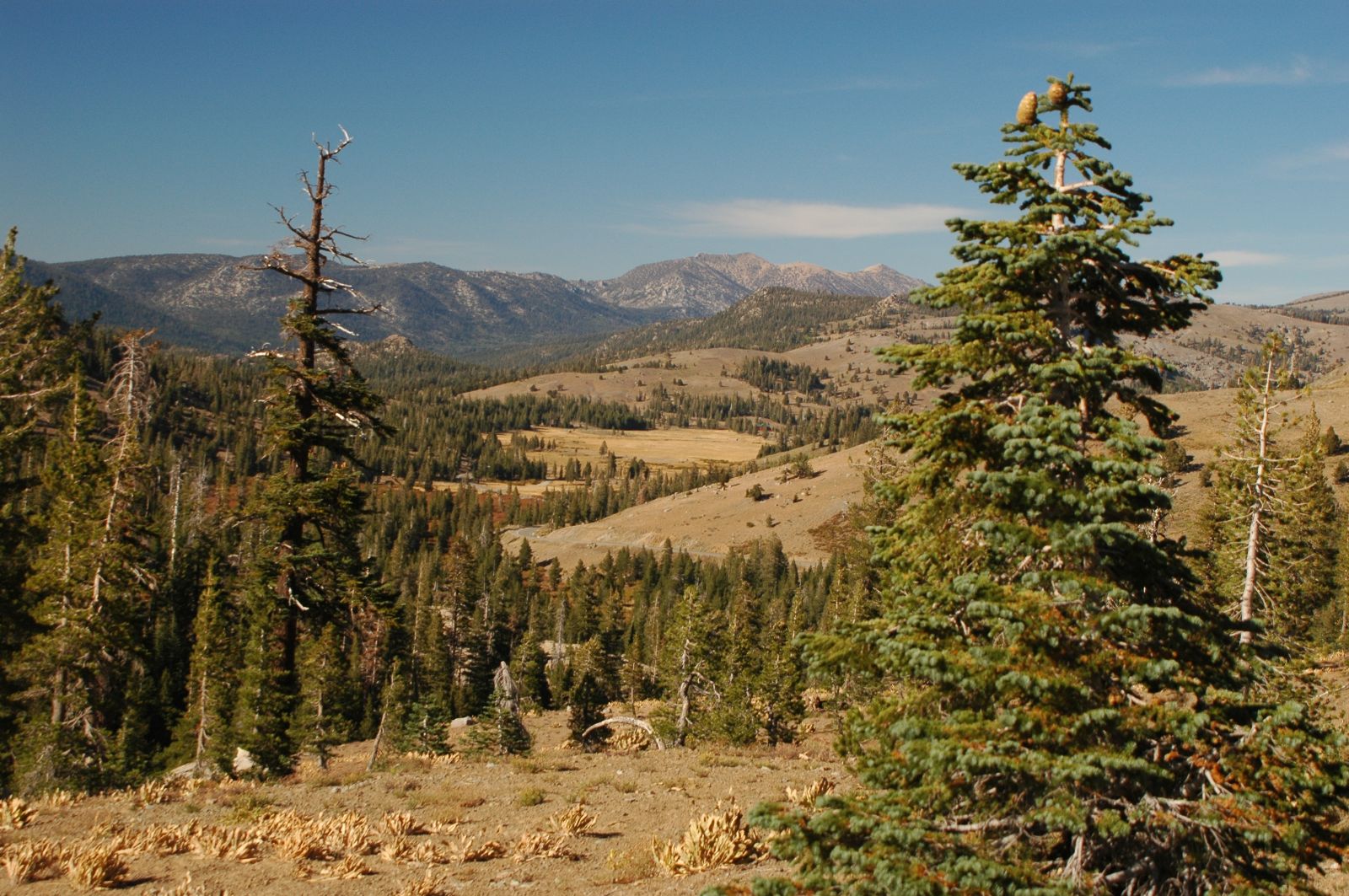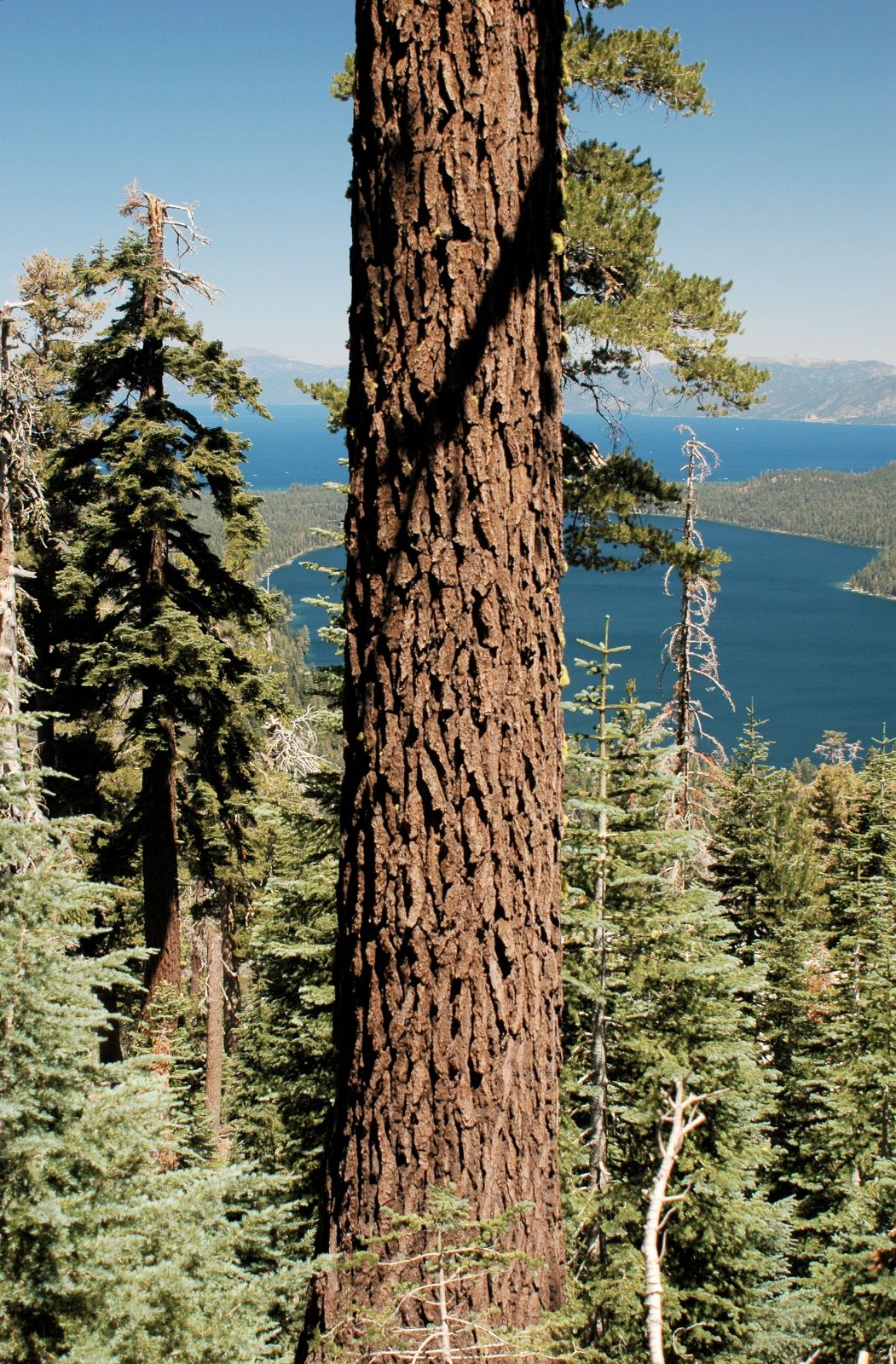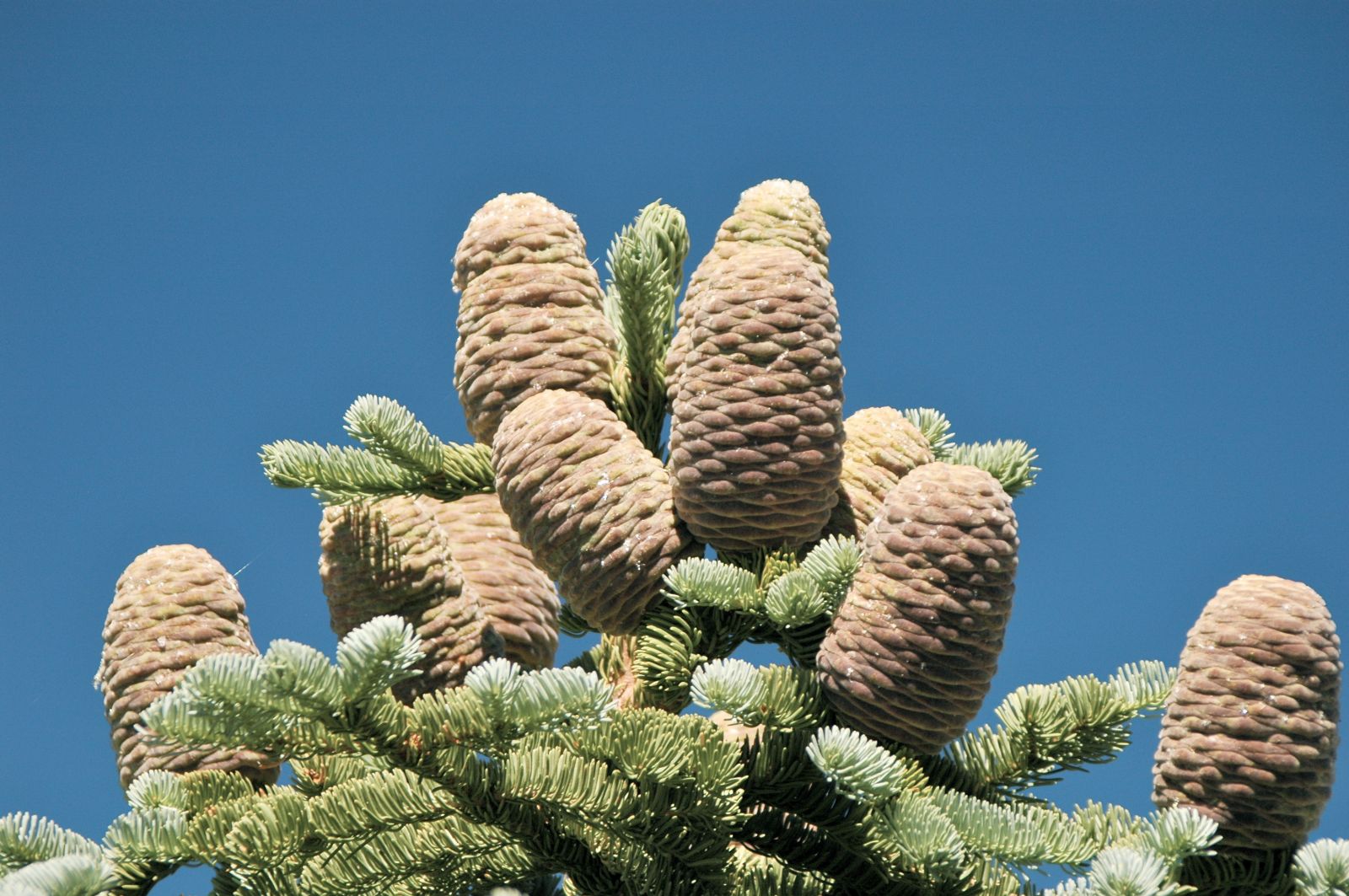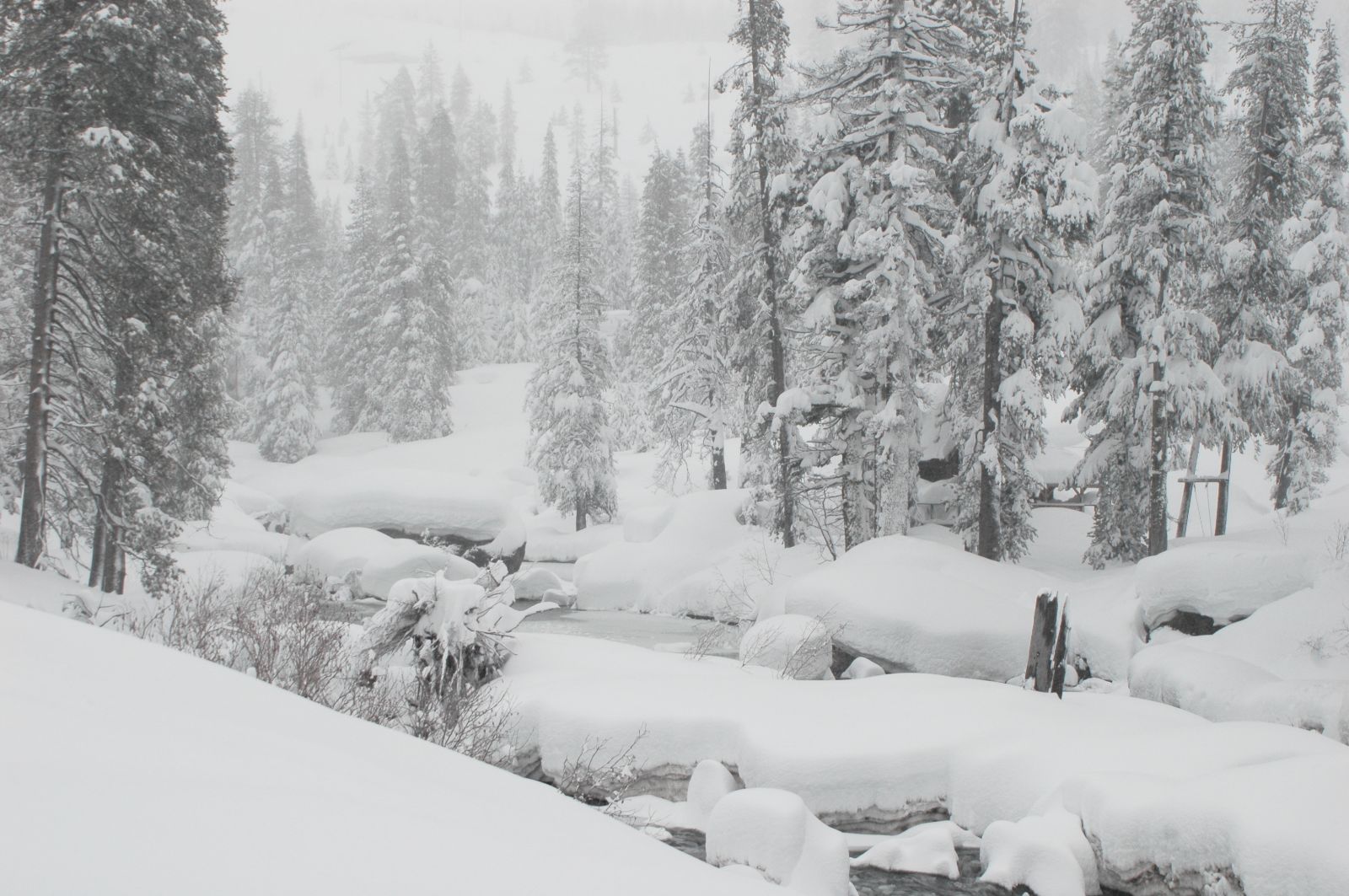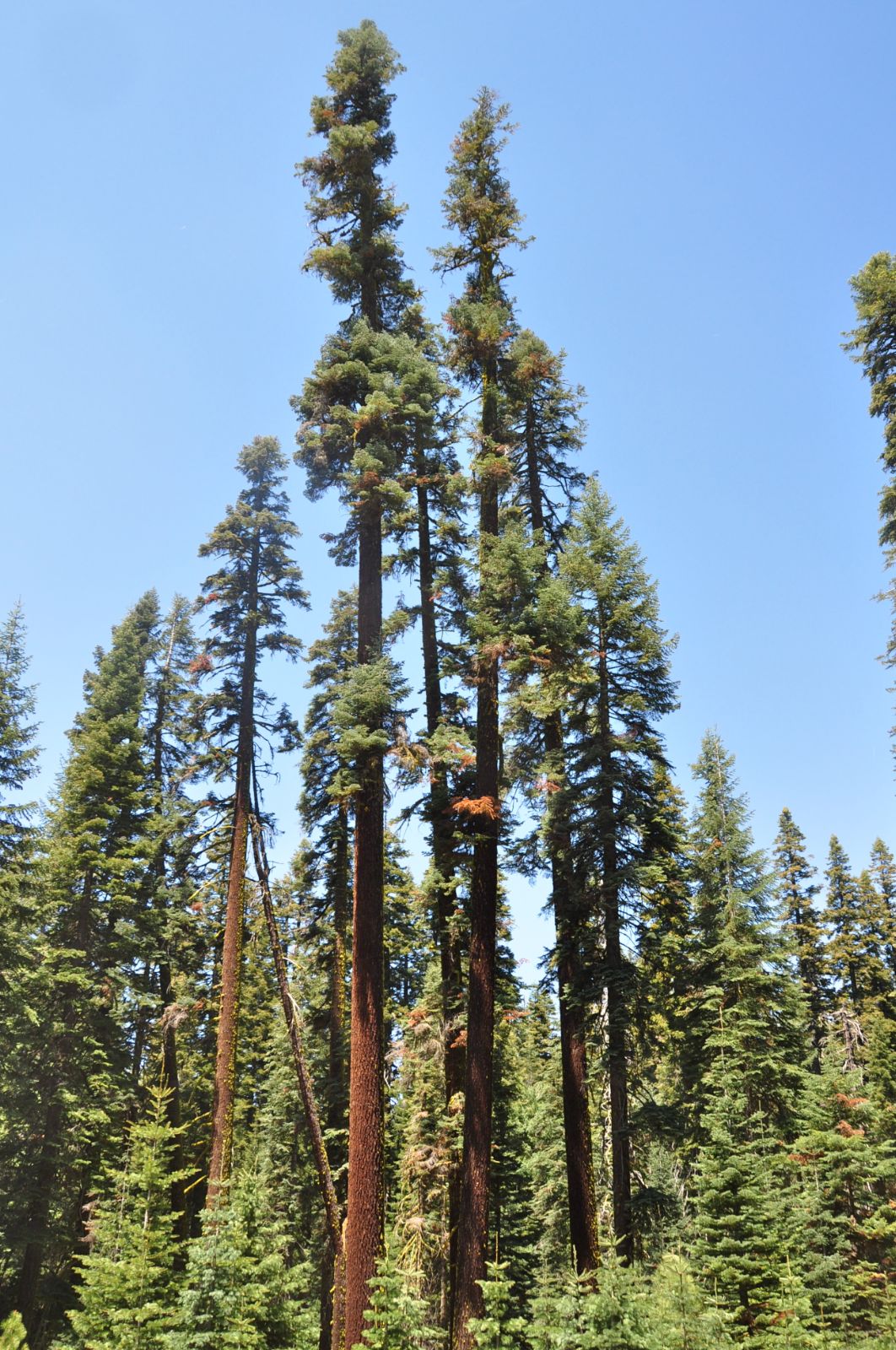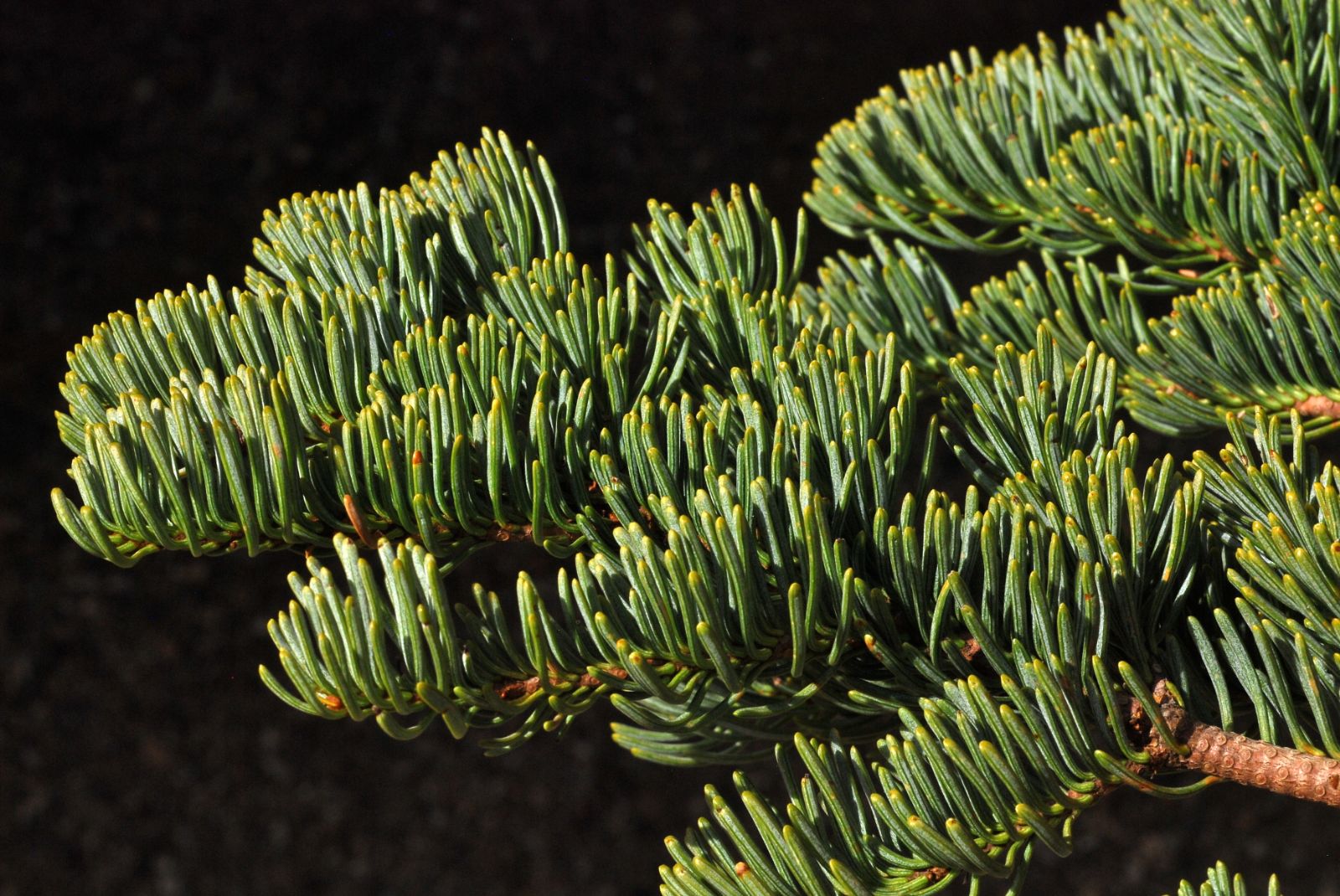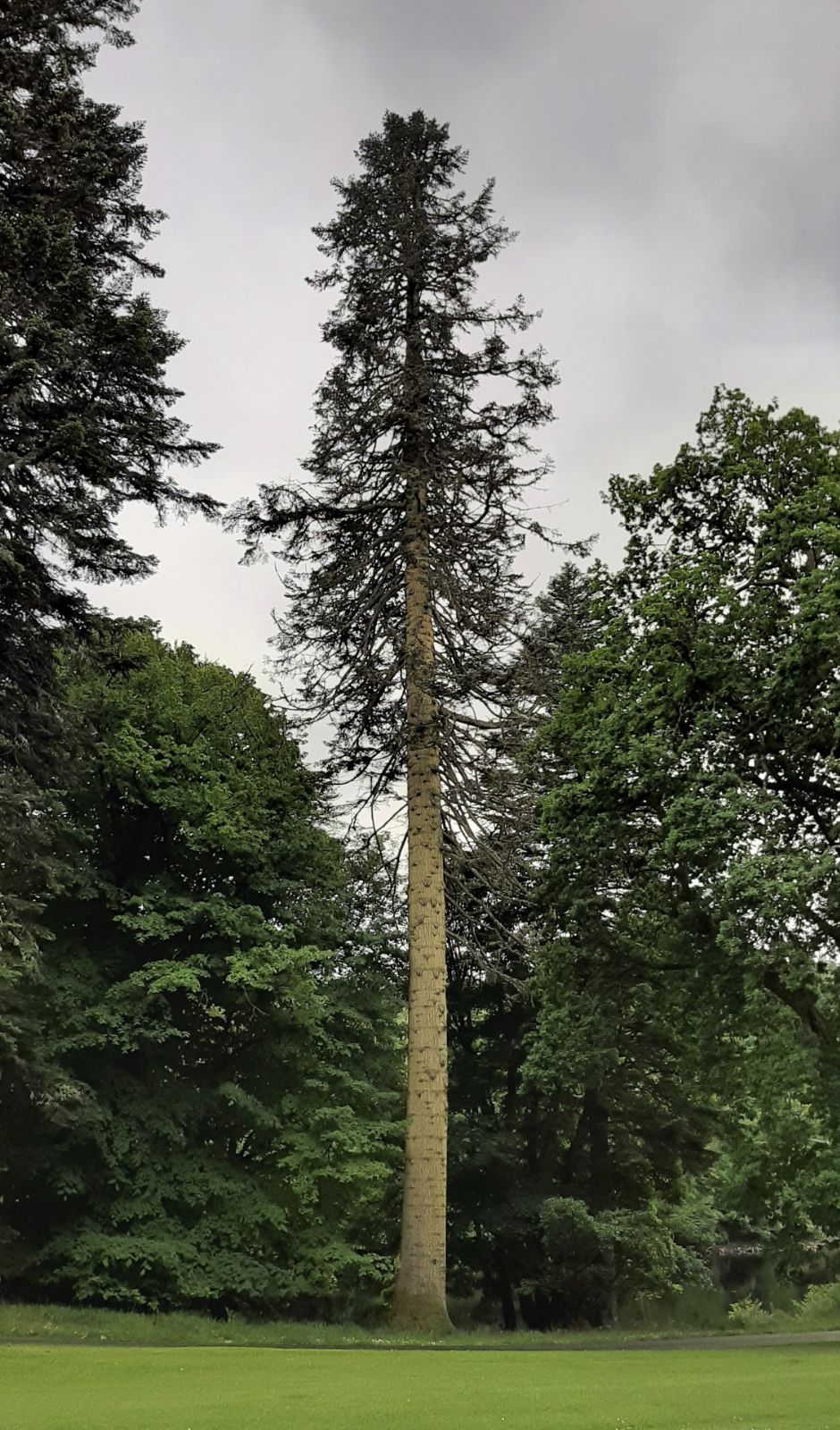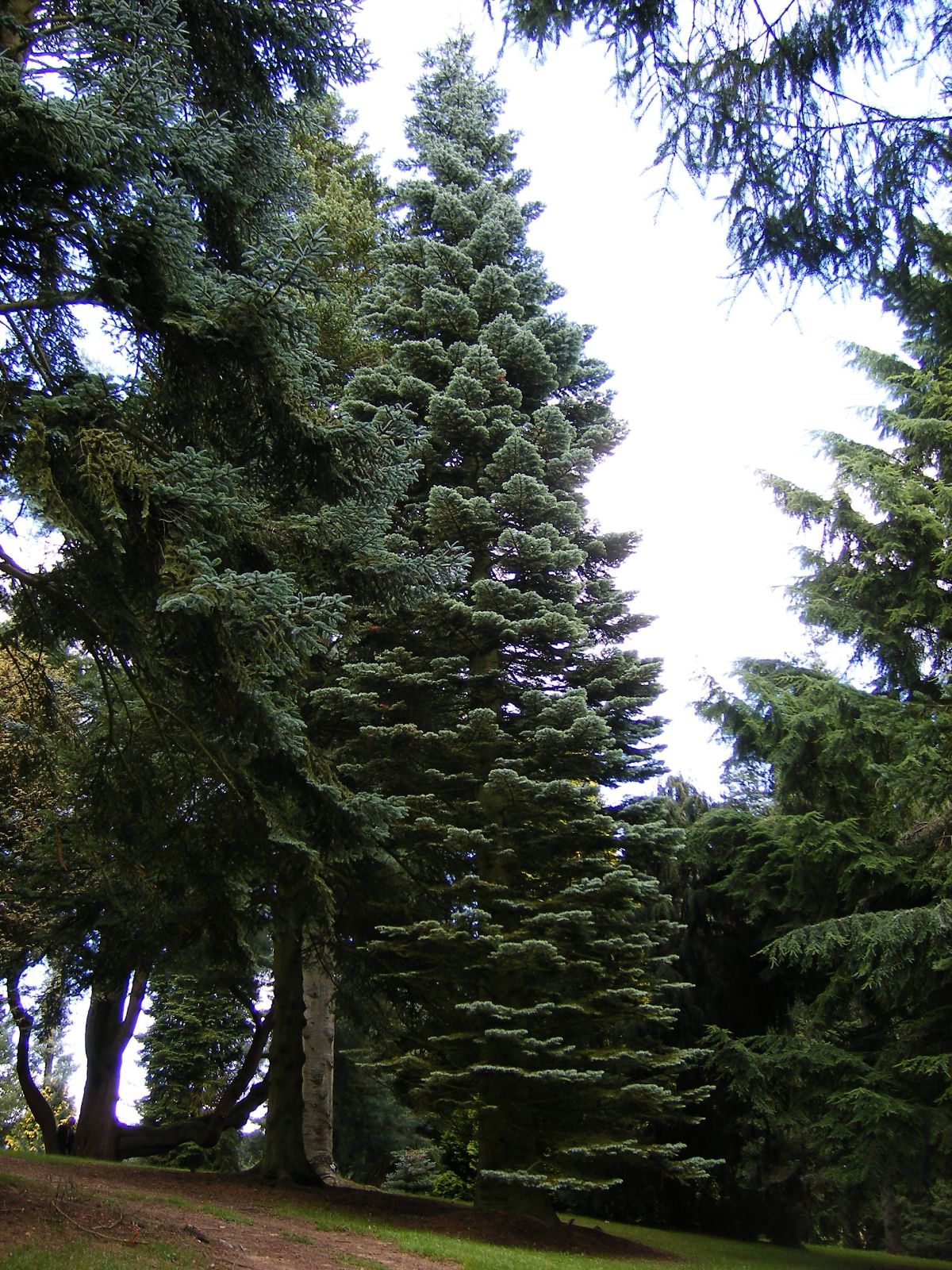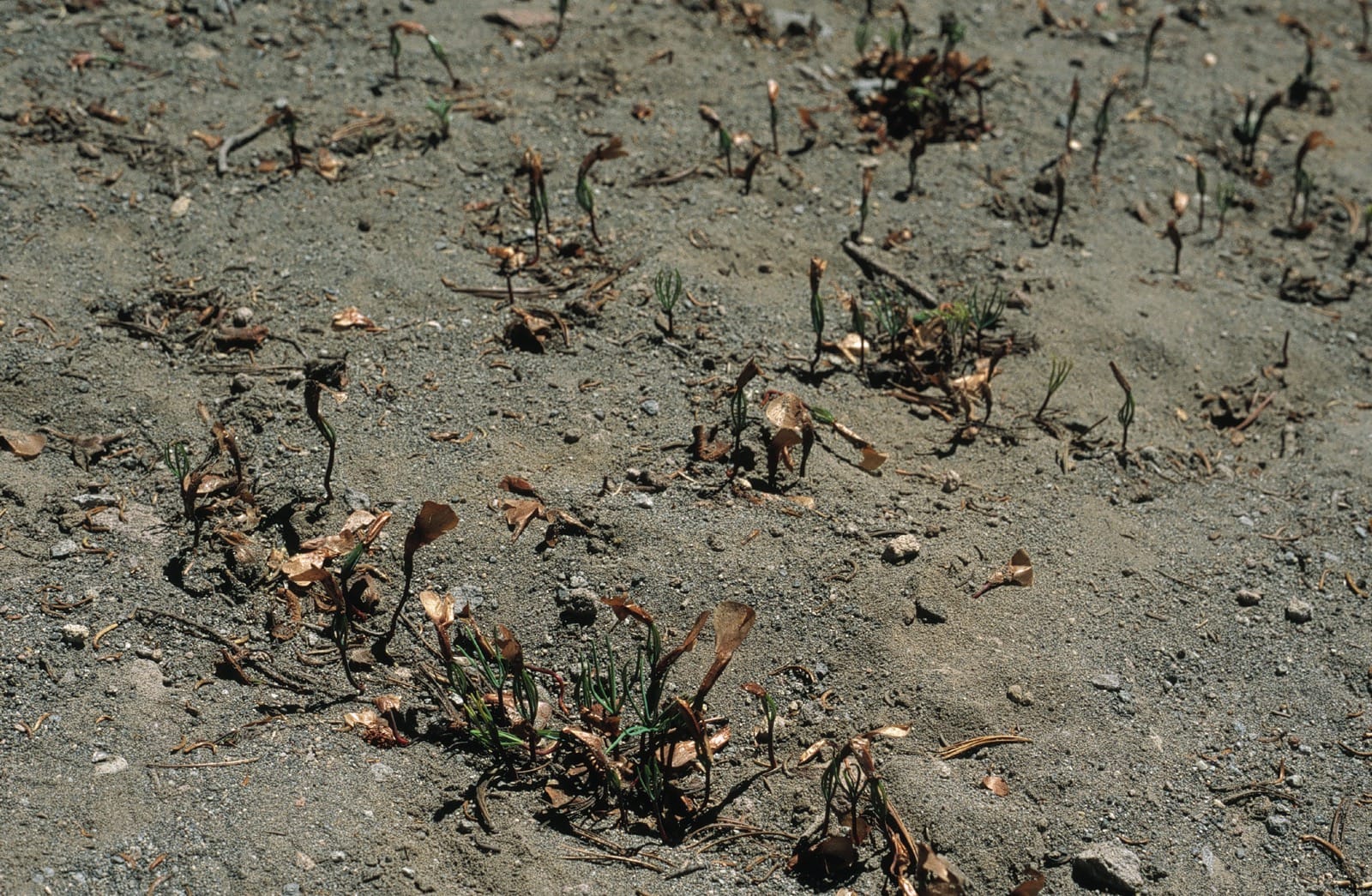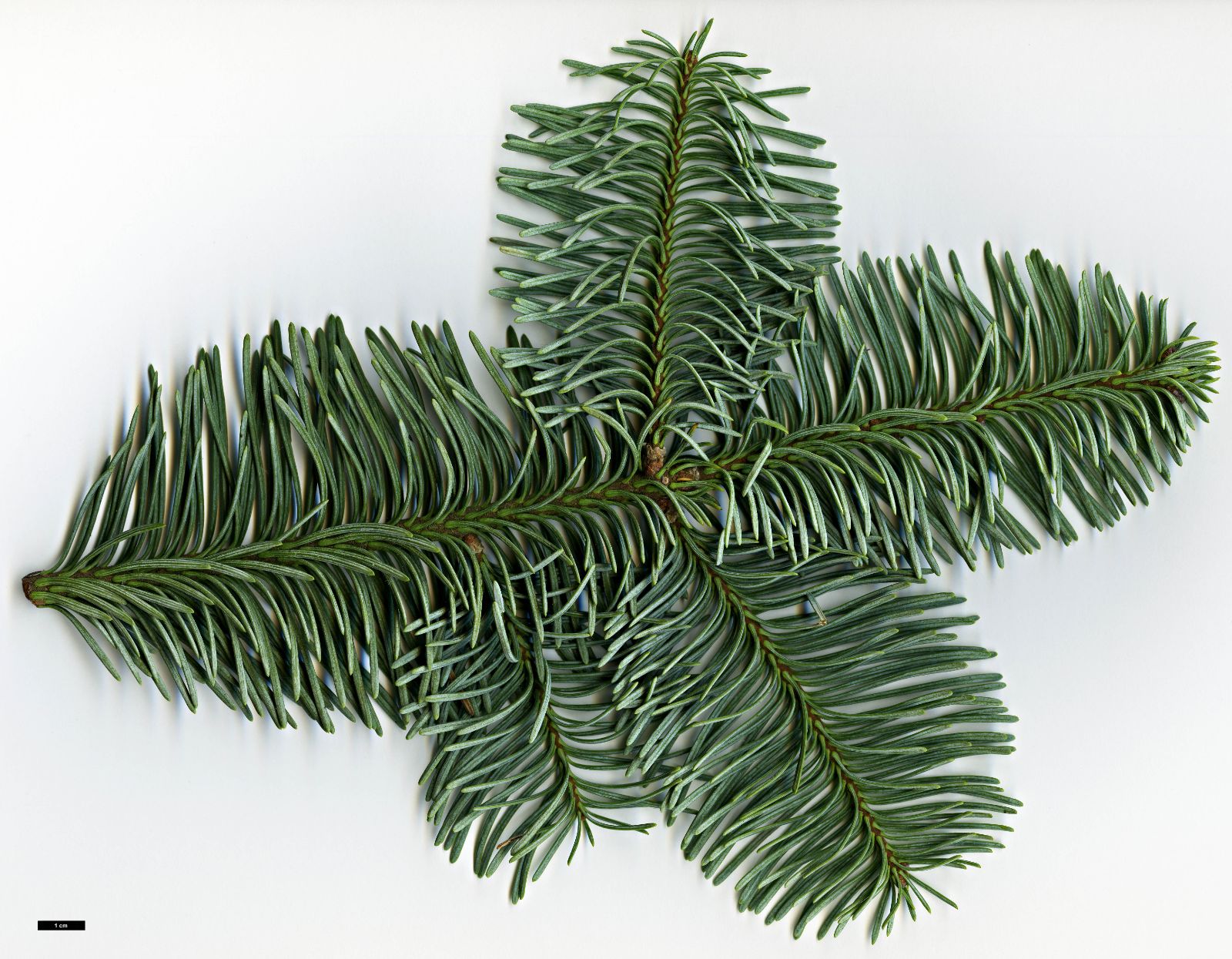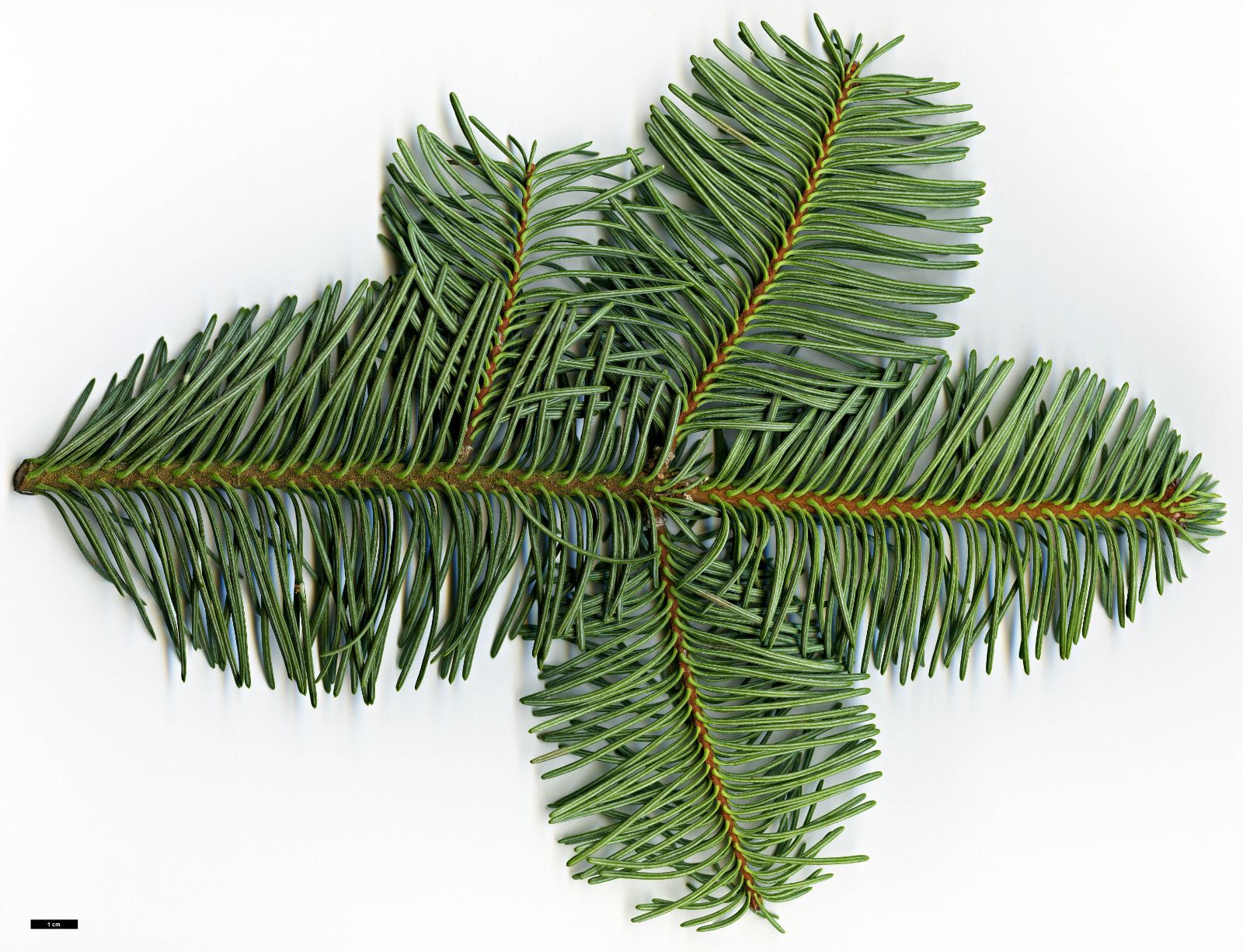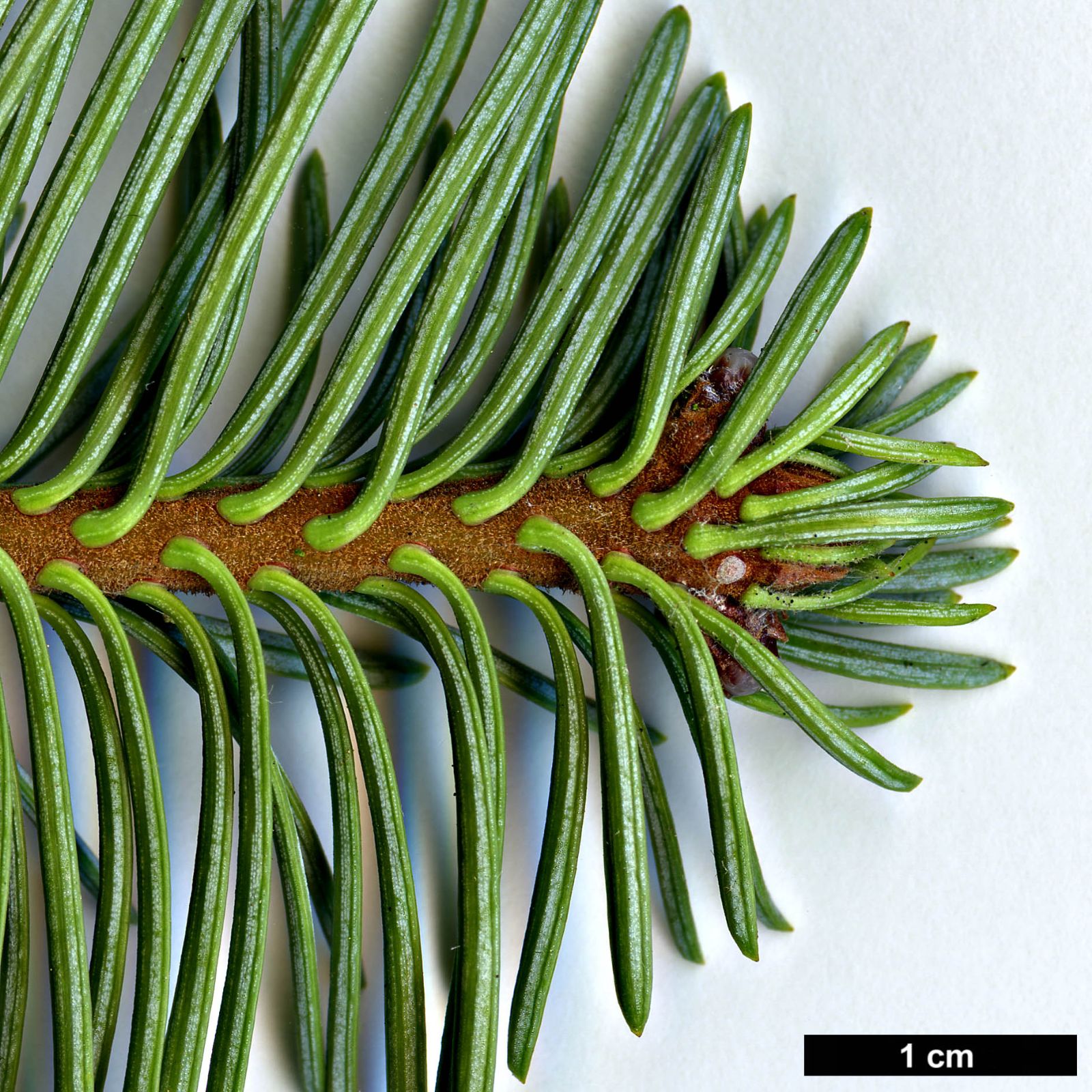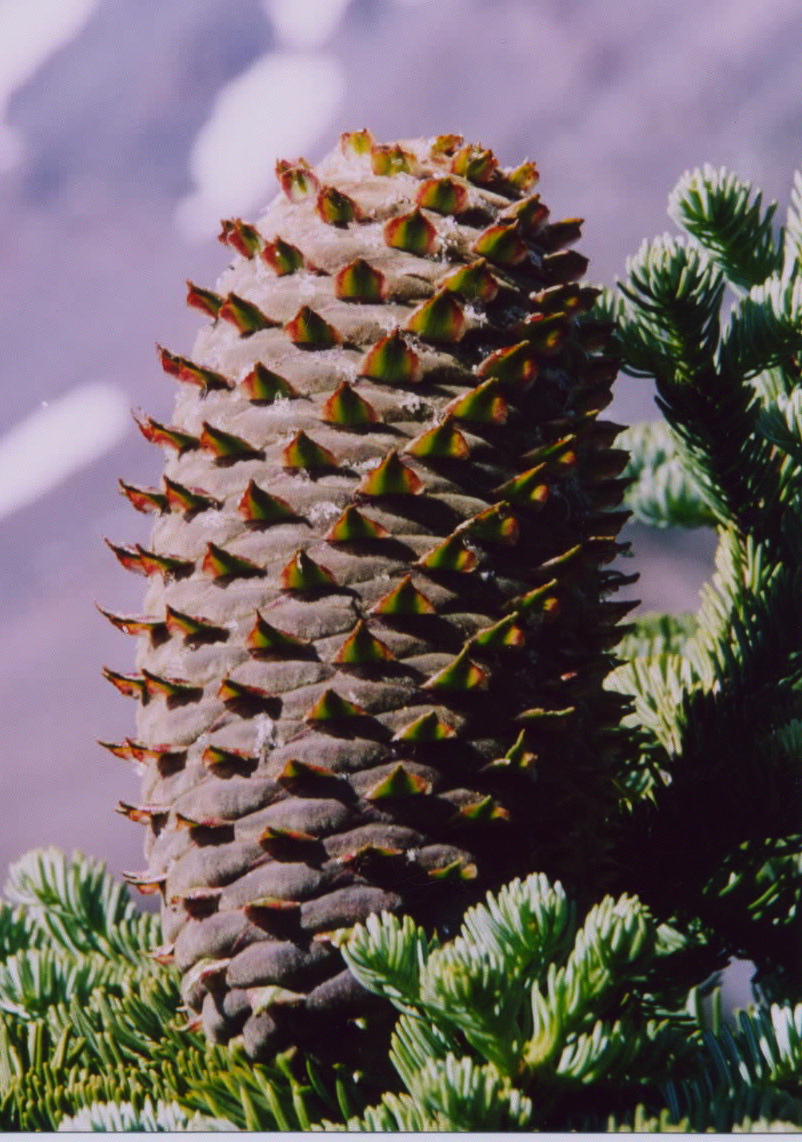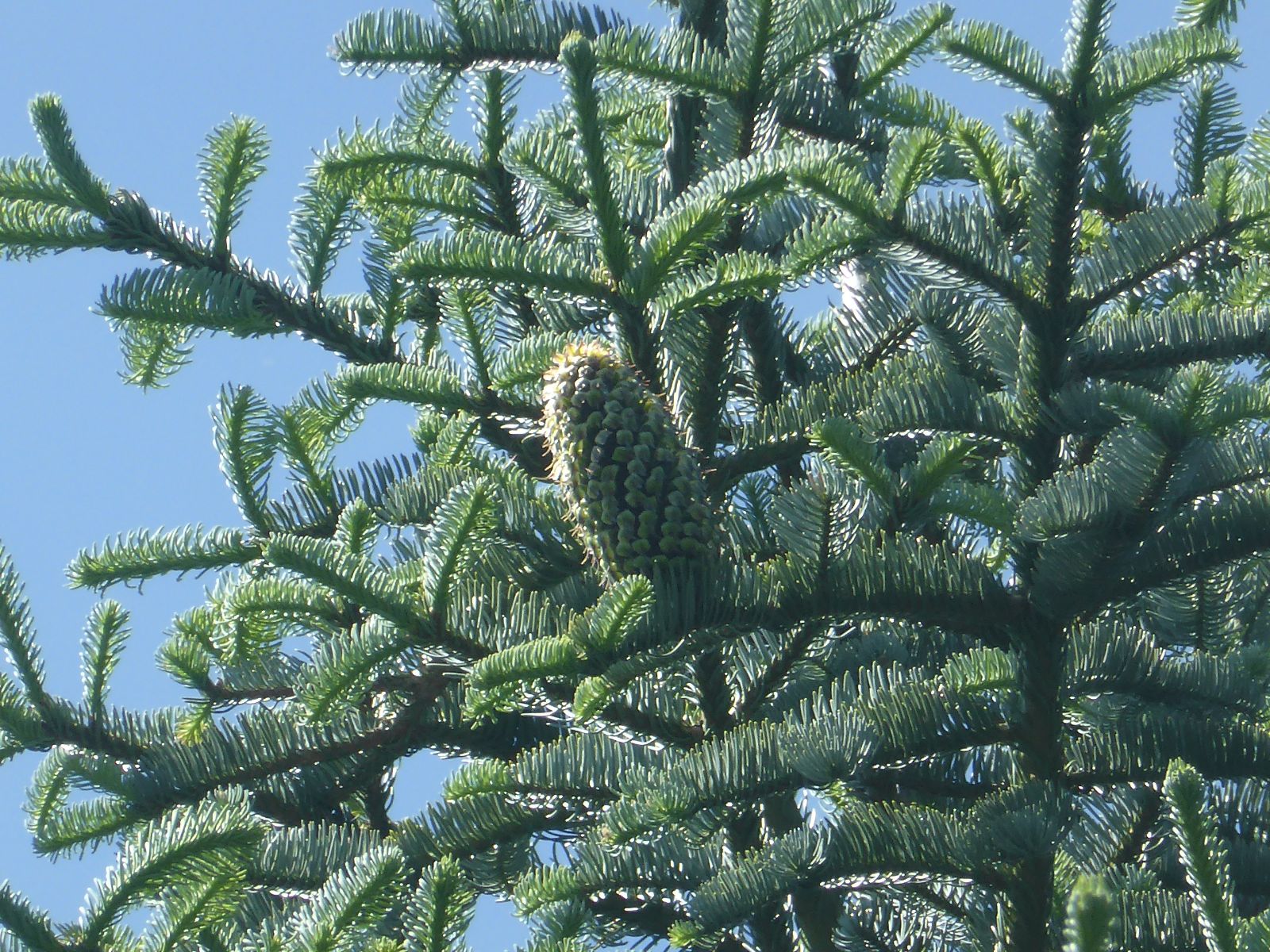Abies magnifica
Sponsor
Kindly sponsored by
Sir Henry Angest
Credits
Tom Christian (2021)
Recommended citation
Christian, T. (2021), 'Abies magnifica' from the website Trees and Shrubs Online (treesandshrubsonline.
Genus
Common Names
- Red Fir
- California Red Fir
- Pompous Silver Fir
- Red Bark Fir
Infraspecifics
Other taxa in genus
- Abies alba
- Abies amabilis
- Abies × arnoldiana
- Abies balsamea
- Abies beshanzuensis
- Abies borisii-regis
- Abies bracteata
- Abies cephalonica
- Abies × chengii
- Abies chensiensis
- Abies cilicica
- Abies colimensis
- Abies concolor
- Abies delavayi
- Abies densa
- Abies durangensis
- Abies ernestii
- Abies fabri
- Abies fanjingshanensis
- Abies fansipanensis
- Abies fargesii
- Abies ferreana
- Abies firma
- Abies flinckii
- Abies fordei
- Abies forrestii
- Abies forrestii agg. × homolepis
- Abies fraseri
- Abies gamblei
- Abies georgei
- Abies gracilis
- Abies grandis
- Abies guatemalensis
- Abies hickelii
- Abies holophylla
- Abies homolepis
- Abies in Mexico and Mesoamerica
- Abies in the Sino-Himalaya
- Abies × insignis
- Abies kawakamii
- Abies koreana
- Abies koreana Hybrids
- Abies lasiocarpa
- Abies mariesii
- Abies nebrodensis
- Abies nephrolepis
- Abies nordmanniana
- Abies nukiangensis
- Abies numidica
- Abies pindrow
- Abies pinsapo
- Abies procera
- Abies recurvata
- Abies religiosa
- Abies sachalinensis
- Abies salouenensis
- Abies sibirica
- Abies spectabilis
- Abies squamata
- Abies × umbellata
- Abies veitchii
- Abies vejarii
- Abies × vilmorinii
- Abies yuanbaoshanensis
- Abies ziyuanensis
Tree 40–60(–70) m tall, 2–3 m dbh. Crown narrowly conical in youth; barrel-shaped or columnar and open in old trees. Bark of young trees smooth with prominent resin blisters, greyish; becoming rough, deeply and conspicuously fissured, reddish-brown to grey. First order branches relatively short, spreading, the lower ones down swept in old trees; second order branches spreading horizontally. Branchlets slender, strong, pliable, yellowish brown with ridges and grooves, densely pubescent with reddish-brown hairs for ~2 years, often partly hidden by decurrent needle bases. Vegetative buds ovoid-globose or somewhat conical, small, obscured by short terminal leaves, not resinous. Leaves pectinate and upswept below shoots, somewhat assurgent above shoot, 2–4 cm × 1.3–1.6 mm, curved, base abruptly curved or twisted but usually somewhat decumbent, apex obtuse or acute, glaucous grey green and stomatiferous on both sides, not grooved above. Pollen cones crowded, pendulous, 1.5–2 cm long, yellowish with scarlet microsporophylls. Seed cones short-pedunculate or subsessile, barrel-shaped or broad conical with truncate or umbilicate apex, (10–)15–23 cm × (5–)7–10 cm, purplish when immature, ripening to pale yellowish-brown; seed scales cuneate-flabellate, (2.5–)3–4 × (2.5–)3–4 cm at midcone; bracts fully included (in the type; exserted and reflexed in var. shastensis). (Farjon 2017; Debreczy & Rácz 2011; Hunt 1993).
Distribution United States California, western Nevada, southwest Oregon
Habitat Mixed coniferous forests from 1400–2700 m asl in areas characterised by short dry summers and long cold winters, the majority of precipitation as snow. At lower elevations with Abies concolor var. lowiana, Calocedrus decurrens, Pinus lambertiana, and P. monticola, and at higher elevations with A. lasiocarpa and Tsuga mertensiana.
USDA Hardiness Zone 6-7
RHS Hardiness Rating H7
Conservation status Least concern (LC)
Abies magnifica is another North American fir that has disquieted botanists in its strong likeness to another species, in this case Noble Fir, A. procera. Taken together the two are remarkably distinct from all other firs – though superficially similar to one or two Mexican taxa – but Henry Elwes characterised the subtlety of the differences between the two perfectly when he wrote ‘…though difficult to describe, when once seen can seldom be mistaken’ (Elwes & Henry 1906–1913). He was speaking particularly as to their respective crowns, which moments earlier he had suggested were distinctive on account of the ‘formal’ branching arrangement in A. magnifica. Generations of dendrologists, turning their heads and squinting at the crowns of mature trees, have perhaps wished that he had tried a little harder to describe this in more exacting detail! Alan Mitchell did better: ‘…most distinct in regular whorls of short, strongly up-curved branches and big, dark scars on barrel-shaped bole. Much more regular, narrow, upswept and open than A. procera’ (Mitchell 1972).
Sadly, A. magnifica has proven far less amenable in cultivation than A. procera, the only advantage of which is in identifying cultivated trees: if it looks like a Noble Fir, then it probably is a Noble Fir. While that species now frequents the grounds of large houses, sprawling estates, forest plots, and gardens, not to mention some parks and even the more adventurously planted churchyard, Red Fir is more or less restricted to historic and specialist collections, especially so in the case of young plantings. Mitchell (1972) remarked that it seems to be a relatively short-lived species in the UK and Ireland: ‘of the thirteen given by Elwes and Henry…only two survive’, whilst of those given by Bean, the two ‘on the Cathedral lawn’ at Dunkeld, Perthshire, have both gone, and the one by Dunkeld House is showing its age; the Hergest Croft tree is also long-since dead, although another has taken its place (Bean 1976; pers. obs.). There are, however, a handful of remarkable survivors. The very best grows just south of St Bride’s Kirk in the grounds of Blair Castle, Perthshire. This is a beautiful tree, much photographed, and when planted in 1878 it was thoughtfully placed near to an A. procera on one side, and an A. concolor var. lowiana on the other – a most helpful triptych for any student of firs.
The tree at Blair was 41 m × 1.65 m dbh when measured in 2015, slightly shorter than the tallest on record in the UK and Ireland which grows at Cragside, Northumberland. This was 45 m × 1.03 m dbh in 2013. The old tree on the edge of a lawn above the riverbank at Dunkeld House was 44.3 m × 1.29 m dbh in 2017. All other trees over 30 m grow in Scotland, but smaller examples are found scattered in collections across much of England and Wales, and the trend is that it becomes increasingly slow and short-lived as one travels south in Britain. A tree planted in the pinetum at Bowood, Wiltshire, in 1974 was only 12 m × 0.32 m dbh in 2016 while a tree in Sandling Park, Kent, recorded at 8 m in 2010, was lost by 2018 (Tree Register 2020)
Perhaps because it proved a fickle subject Red Fir never became particularly popular in Europe, nor has it ever been widely available here compared to other conifers from California and the Pacific Northwest. It was introduced to cultivation by John Jeffrey, collecting for the Oregon Association in 1851, and again by William Lobb the following year. An irregular if unremarkable supply was sustained perhaps up to the end of the 19th century, but this dwindled further as the 20th century progressed. Bean (1976) called Red Fir ‘a strikingly elegant tree of slender conical shape [which] should be planted more widely’ and this remains the case today. The same overall picture appears to be true wherever the species is cultivated. Writing in 1988, Warren & Johnson noted that it was absent from the Arnold Arboretum, and they cite a tree at the Hunnewell Arboretum which at that time was 17 years old and only 1.5 m tall (Warren & Johnson 1988). In 2020 it continues to be absent from the Arnold, except for a single plant of ‘Glauca’ (Arnold Arboretum 2020), nor is it reported from other major collections such as Gothenburg in Sweden (H. Sjöman pers. comm.) or Hørsholm in Denmark (University of Copenhagen 2018). Clearly its high rate of attrition means that in order to guarantee a handful of really good examples surviving into old age, a very great many need to be planted, and unfortunately this hasn’t been happening even in areas where the species can grow relatively well.
Almost all contemporary plantings in the UK are small in number and restricted to specialist collections. In recent years it has been collected several times, including by staff from the Royal Botanic Garden Edinburgh under NCEE 02 in 2009, but this collection yielded very few plants (pers. obs.). The collecting locality, south of Mt Lassen, California, suggests var. magnifica. Young trees from this gathering are growing at Dawyck Botanic Garden, and others have been distributed to sites in Perthshire where it is likely to do well, including to Blair Castle, Dunkeld House, and Murthly Castle (BG-BASE data 2020). Another recent expedition to the region collected the species from Klamath National Forest in southern Oregon under COWS 29. Based on locality this is likely var. shastensis, or possibly even a hybrid with A. procera. The same is true of EHOC 90, collected in 2017 near Bolan Lake, also in extreme southern Oregon, by a joint team comprising staff from the Howick Arboretum and the RBG Edinburgh. It will be some time before the resulting plants can have their identities confirmed as they mature, but an older collection from Bolan Lake, PCL 37, collected in 1991, is grown as var. shastensis at Dawyck.
There is broad agreement in the literature that where A. magnifica meets A. procera, in northern California and southern Oregon, intermediate forms occur (e.g. Debreczy & Rácz (2011); Farjon (2017); Hunt (1993)). Agreement is lacking, though, as to how these should be treated. Historically these intermediate forms have been, rather too conveniently, assigned to A. magnifica var. shastensis, characterised as being like A. procera in having seed cones with exserted bracts, though not to the same extent, but otherwise like A. magnifica. However, both Farjon (2017) and Debreczy & Rácz (2011) note the presence of A. magnifica var. shastensis in the southern Sierra Nevada, far to the south of the transition zone with A. procera. While this supports the varietal status of the Mount Shasta Fir, it somewhat undermines the use of the name to cover hybrid forms, which the Flora of North America suggests ‘should be assigned to A. magnifica, A. procera, or A. magnifica × A. procera (E.L. Parker, 1963) depending on the morphologic criteria selected to differentiate the species’ (Hunt 1993).
'Glauca'
Common Names
Azure Fir
A selection with needles ‘deep glaucous green’ (Edwards & Marshall 2019). It was described in 1891, apparently from material cultivated in Europe as Jacobson suggests it was introduced to North America during or before 1899, and entered commerce there during or before 1907 (Jacobson 1996). It is quite rare; in the UK and Ireland The Tree Register records only a single example, a tree of 6.3 m in 2008 growing at the Sir Harold Hillier Gardens, Hampshire (Tree Register 2020). It is also represented by a single tree at the Arnold Arboretum (Arnold Arboretum 2020).
'Nana'
A name listed by Warren & Johnson (1988) among firs growing at the Arnold Arboretum. At the time they described it as ‘50 cm tall and not thriving’ – it has since died (Arnold Arboretum 2020). Where it does thrive it can form a handsome miniature suitable for a rock garden, growing up to 1 m tall in ten years (Auders & Spicer 2012).
'Prostrata'
A low-growing, leaderless, somewhat dwarf form with wide-spreading branches (Edwards & Marshall 2019).
var. shastensis Lemmon
Common Names
Shasta Red Fir
Synonyms
Abies magnifica var. xanthocarpa Lemmon
Var. shastensis has smaller cones than the type (10–13 × 5–8 cm cf. 18–25 × 7–10 cm) and the bract scales are exserted and reflexed. (Debreczy & Rácz 2011; Grimshaw & Bayton 2009).
Distribution
- United States – From Lassen Peak, California, to Crater Lake, Oregon.
RHS Hardiness Rating: H6
USDA Hardiness Zone: 6
In the early 1970s Alan Mitchell reported only one good tree of var. shastensis in the UK and Ireland: a 17 m tree at Bedgebury, apparently a rogue seedling in a stand of otherwise typical var. magnifica. All others extant at this time were considered ‘miserable grafted specimens’ (Mitchell 1972). Certainly, it remains rare and confined to specialist collections, but in a reversal of fortune var. shastensis is now probably more widely planted than the type following several introductions in recent decades.
In Scotland, material collected as var. shastensis by staff from the Royal Botanic Garden Edinburgh in 1991 is grown at Dawyck under PCL 37 and 85. It is slow growing here, the best being 14 m × 0.33 m dbh in 2020 (pers. obs. 2020), while at Mount Stuart on the Isle of Bute there is one tree surviving from a group of three, which by spring 2018 was a mere 5 m × 0.14 m dbh (pers. obs. 2018). Additional summer heat may help it along: a tree planted at the Sir Harold Hillier Gardens in 1989 was 13.3 m tall by 2018 (Tree Register 2020). More recently, plants grown from seed collected as var. shastensis by Roy Lancaster s.n. on Fiddler Mountain, Oregon, in 2009 have been distributed by Bedgebury National Pinetum under their accession number 09/187. As discussed at the end of the main species account, the recent gatherings of COWS 29 and EHOC 90 were made within the known range of var. shastensis and probably represent this taxon, or else a hybrid with A. procera. Incidentally, knowing what we know now about this taxon, it seems likely that Mitchell’s rogue seedling at Bedgebury was a chance hybrid with A. procera, rather than var. shastensis.
A tree at Hergest Croft fits var. shastensis; it was collected from the wild in autumn 1971. Approaching 20 m, it is considerably larger than the (official) UK champion for height, a tree of 14 m (in 2010) in the Valley Gardens, Windsor Great Park (Tree Register 2020). These trees are remarkable in a European context, but pale in comparison to wild trees. Jacobson (1996) reports specimens to c. 70 m in the wild, in Rogue River National Forest, Oregon, while in New Trees John Grimshaw paints an evocative picture of encountering this taxon in the wild on the eponymous Mount Shasta in north California:
‘The volcanic cone of Mount Shasta is one of the most beautiful sights on a journey along the California I5 freeway, which runs in the valley between it and the Siskiyou mountains to the west. The discerning botanist will turn to the Siskiyous and their fabulous botanical diversity; in contrast Mount Shasta is extremely depauperate, no doubt in consequence of its recent volcanic origin. Its slopes, however, support a fine forest of Abies magnifica var. shastensis, growing as large trees to the timberline, and a detour was made to visit these trees when I (JMG) was in western North America in June 2004. With the snow-capped peak behind them they are a magnificent sight. The snow was only just melting at treeline, and as it receded it revealed thousands of Abies seedlings emerging through the otherwise barren pumice gravel, as densely as Sycamore (Acer pseudoplatanus) seedlings in an English lawn’ (Grimshaw & Bayton 2009).
Elsewhere, var. shastensis is reported from a handful of collections, including Hørsholm in Denmark (University of Copenhagen 2018), the Tasmanian Arboretum (tasmanianarboretum.org) and, closer to home, the University of California Berkeley Botanic Garden (University of California Botanical Gardens at Berkeley 2018) and the Sacramento State University Arboretum (Sacramento State University 2006). Several introductions have been made to the Arnold Arboretum, but none have survived (Arnold Arboretum 2020).

